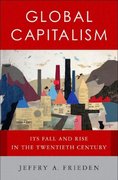Into to Mathematical Economics.
Chapter 6. Comparative Statistics
Problem 1 Let's introduce income, 1", in the simple market model, We assume that the gad being sold is normal and, then, the demand and supply equations are given by Q, =avde+cY (a,b,c>} Q.=7d+ef'. (22>0) (a) Find out the expr-srons for the equilibrium price and quantity in this market, in terms of all other variables {income in this case) and parameters. How do these exprmions di'er from those in equation (1)? (Keep in mind. that r in this unwise is something totally di'erent from c in the class example, 5' in this exercise equals c in the clas example, and e in this exercise equals d in the class mple.) (b) Wbst is the partial eects o\") in the equilibrium price and quantity? Can you sign them? Compare them to the expressions we got Emrn the class example without tax. (Again, keep in mind, that c in this exercise is something totally different from c in the class example, :1 in this exercise equals 1: in the class example, and e in this exercise equals (1 in the class example.) (c) What is the effect of c in the equilibrium price and quantity? Can you sign them? Problem 2 In this problem you're going to analyze the eEects of a unit subsidy in a market. With I. unit subsidy the government \"pays\" a xed amount per unit of the good pmduoed, s. it doesn't matter if the government pays the noneumers or the producers for this, the e'ect in the market is the same. The system of equations that determine the equilibrium, Are QA=Q. P=P,va (530) Qs=a7st (n>0,b>0} Q.= c+dP. (c>0,d>0) {it} Find cult the upmiuna to the equilibrium prices, P: and H", and quantity in the market, in terms of ail the parameters of the model, and the exogenous variable 3. How do these expressions differ um those in equation (4)? (In this Exercise all the letters reprmt the same as in the class mole, except for s, which is s new parameter.) (a) Find out the expremions fo the equilibrium prices, P\" and Pd', and quantity in the market, in terms of all the parameters of the model, and the exogenous variable .5. How (in them expressions dier from those in equation (rt)? (In this exercise all the letters represent the Borne as in the class example, except for s, which is a new parameter.) (b) Derive the partial effects of d in the equilibrium prime and quantity Can you lgu ear-b one of them? Compare them to the partial eects on the equilibrium price and quantity in the class uemple without the unit tax? How rlotnr r, aect each partial eect if at all? (c) Derive the partial effects of 5 in the equilibrium prime and quantity. Can you sign each of that: partial elfecta'? Problem 3 We are now going to go to the national income model, and and u nancial market to it. In the nancisi marinate, as a nation, we honvw to invest. This means that the demand for investment, I, is now endogenousr and is a function of the real interest rate. Ra, which is exogenous. The system of equations is now Y=C+I+Go C=nr+(YT) (a>i];l}U;00;9>0). (a) Solve the system of equations and get the equilibrium expressions of the endogenous variables in terms of the lugenuus variables and the parameters. (b) Find the partial e'ects of government expenditure, Go, on both equilibrium income, 1", and equilibrium comumption, C'. Can you sign them? Do they die'r at all from those we got in munitions (9) and (12)? l (c) Find the partial clients of Ra on Y' and 0'. Can you sign these partial eects







